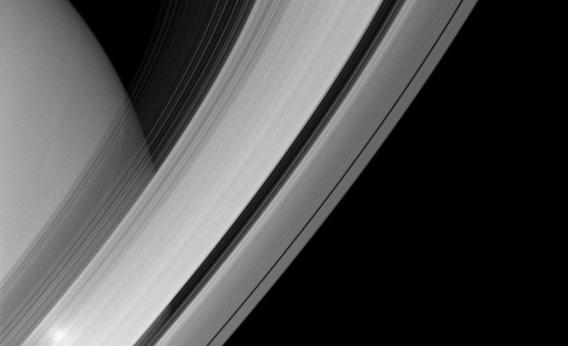Create a free profile to get unlimited access to exclusive videos, sweepstakes, and more!
Two Extraordinary Views of Saturn

I marvel at the Cassini spacecraft. Itâs incredibly productive, so much so that keeping up can be difficult. In fact, I was all set to write a short piece on a gorgeous image of Saturn just released by the folks at NASA, when another came in before I could even start!
So here you go, two jaw-droppy pictures for the price of one.
The first is a somewhat rare view of Saturnâs north pole, not commonly seen well because Cassini doesnât spend much time so far north of Saturnâs equator:
This image shows a part of Saturnâs bizarre hexagonal vortex; a six-sided cloud pattern thatâs been blowing over the Saturnian arctic for at least three decades. This sort of pattern may seem really strangeâand to be fair, it isâbut itâs actually a quite natural consequence of spinning fluids. Itâs even been reproduced in a lab:
Emily Lakdawalla at The Planetary Society blog has more info. Polar vortices are actually common; the Earth has one, as do several other planets. Itâs not really a storm, just a stable wind pattern. This image, taken in the near-infrared, accentuates clouds and highlights features in the planetâs atmosphere.
Also, as a reminder, inside Saturnâs polar hexagon is an actual raging storm, and the pictures of that are ridiculously awesome.
The second Cassini photo is also quite lovely, but it has a surprise that made me smile in delight:
I like the dynamic angle of Saturn and the rings in this shot, and how itâs framed, too. Itâs amazingly dramatic, with the rings curving around the planet, and you can see the fainter inner rings against the planetâs clouds and the darkness of space, too.
But look again, down at the bottom. Whatâs that bright spot?
Itâs real, and due to the âopposition effectâ. When light hits tiny particles of ice and rock, it gets bounced off in all directions (this is called scattering). But thereâs an effect where more light is scattered directly back in the direction from which it came. You may have seen this before; when you walk along a field of dew-laden grass in the early morning, it appears that the shadow of your head has a bright halo around it. The dew drops send light back toward the Sun, and so the grass that lies on a line with the Sun and your eyes (where the shadow of your eyes falls on the grass, actually) is sending more light toward your eyes, so you see a halo.
Apollo astronauts saw the same thing on the Moon. Iâve seen it, quite strongly, walking across a dusty baseball infield.
Thatâs whatâs happening in this Cassini image, too! The Sun was almost directly behind Cassini when it took that picture, and the tiny particles of ice in the ring are scattering the light back toward Cassiniâs cameras, creating that bright spot. Itâs called the âopposition effectâ because the Sun and the particles have to be opposite each other (180° apart) as seen by the camera or your eyes. It's also called an "opposition surge" which I think is quite poetic.
This isnât the first time itâs been seen in Saturnâs rings by Cassini; in 2007 a fantastic picture was released showing it as a rainbow! The spread of colors wasnât real, but was actually due to a combination of Cassiniâs motion and the need to change filters from red to green to blue. When combined, the three images smeared out the colors of the bright spot, producing a multi-hued spot. You can also see the opposition glow at the 3:00 mark in the video embedded here.
Right now as I write this, Saturn is getting closer to the Sun, sinking lower in the western horizon after sunset every day. A few months ago, when it was up and well-placed all night, I delighted in showing many people the ringed wonder through my telescope, and it was always a tremendous moment to watch their eyes go wide when they saw it for the first time. Saturn is amazing, the crown jewel of the solar system, and Iâm very glad we have as magnificent a machine as Cassini tending to it.














